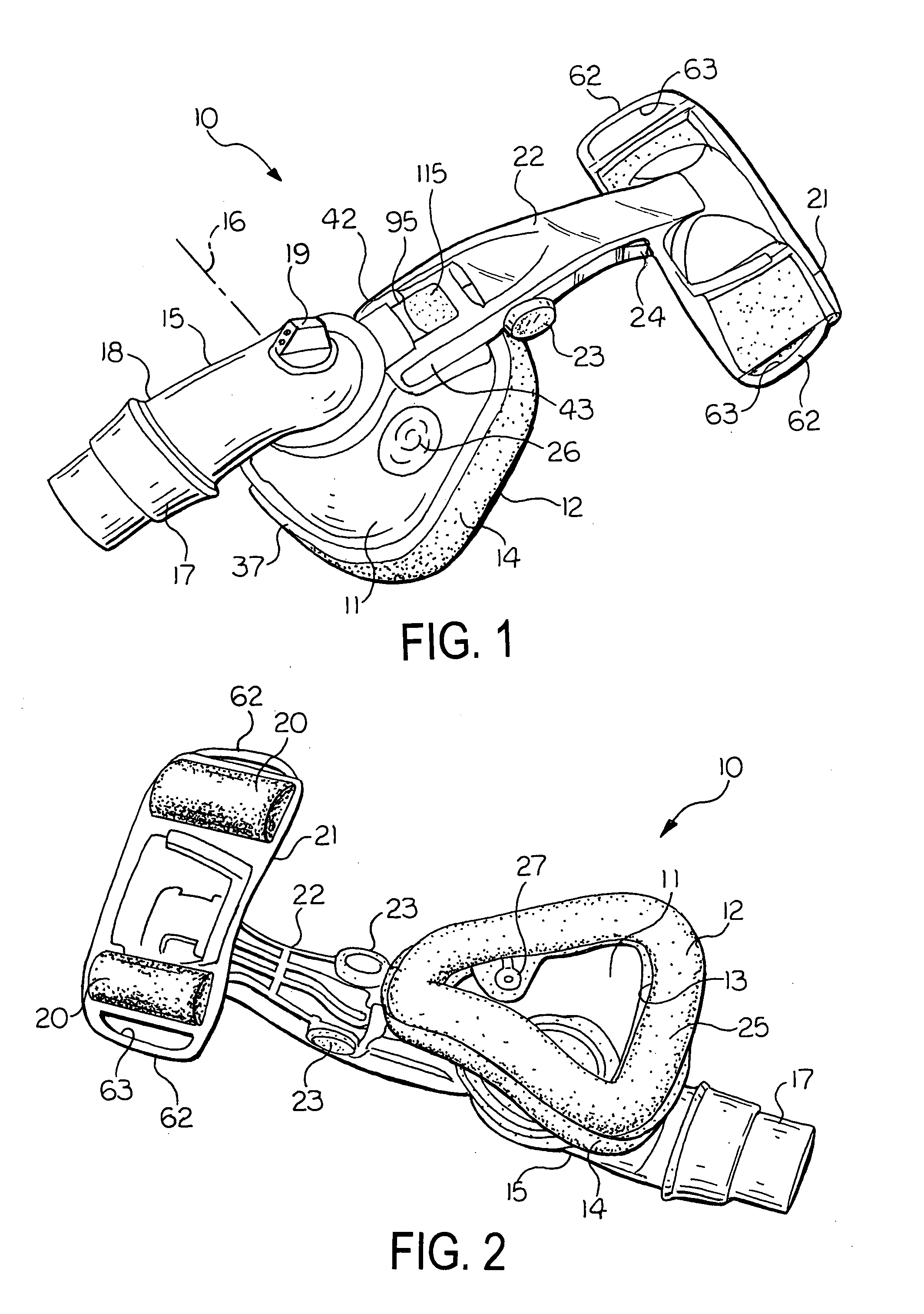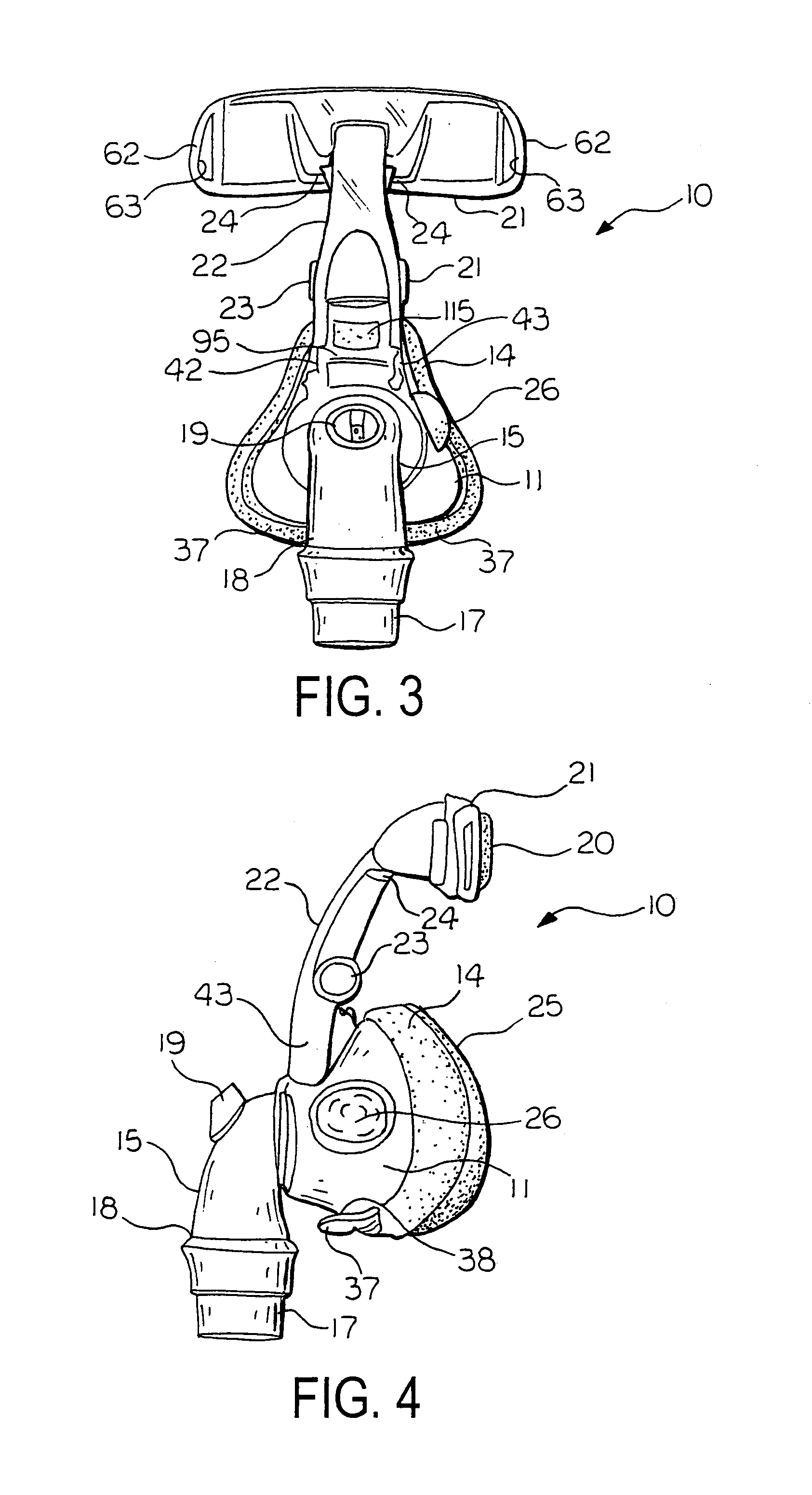Method for securing a nasal mask
a technology for nasal masks and masks, applied in the field of nasal masks, can solve the problems of difficult patient talk while wearing masks, and achieve the effects of preventing air leakage, reducing the pressure on the nose bridge of patients, and facilitating customization
- Summary
- Abstract
- Description
- Claims
- Application Information
AI Technical Summary
Benefits of technology
Problems solved by technology
Method used
Image
Examples
Embodiment Construction
[0044]Referring to the drawings, FIGS. 1–4 show a nasal mask 10 according to a first embodiment of the invention for applying a positive gas pressure to a patient's respiratory system. The mask 10 is of a type which may be worn by a patient during sleep for treating sleep disorders, such as sleep apnea. The mask 10 is used for applying either a continuous or an intermediate positive air pressure from CPAP apparatus to the patient's respiratory system to prevent soft tissues from collapsing and blocking the passages during breathing, for example, for preventing OSA. However, it will be appreciated that the nasal mask 10 may be used for applying a positive gas pressure to a patient's airway for other medical purposes.
[0045]The mask 10 includes a body 11 and a cushion 12 which has a central opening 13 for receiving the patient's nose. Preferably, the cushion 12 is removable from the mask body 11 to facilitate cleaning and replacement. The cushion 12 has a contour which generally confor...
PUM
 Login to View More
Login to View More Abstract
Description
Claims
Application Information
 Login to View More
Login to View More - R&D
- Intellectual Property
- Life Sciences
- Materials
- Tech Scout
- Unparalleled Data Quality
- Higher Quality Content
- 60% Fewer Hallucinations
Browse by: Latest US Patents, China's latest patents, Technical Efficacy Thesaurus, Application Domain, Technology Topic, Popular Technical Reports.
© 2025 PatSnap. All rights reserved.Legal|Privacy policy|Modern Slavery Act Transparency Statement|Sitemap|About US| Contact US: help@patsnap.com



